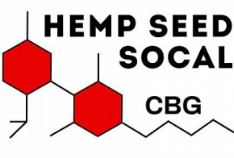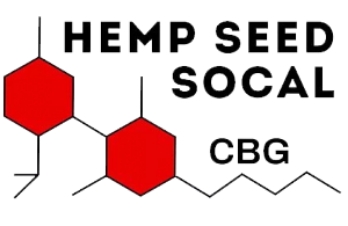Appropriate care is advised when prescribing ziprasidone for patients who will be experiencing conditions which may contribute to an elevation in core body temperature, e.g., exercising strenuously, exposure to extreme heat, receiving concomitant medication with anticholinergic activity, or being subject to dehydration. The mean daily dose of ziprasidone in this study was 112 mg. Carbamazepine is an inducer of CYP3A4; administration of 200 mg twice daily for 21 days resulted in a decrease of approximately 35% in the AUC of ziprasidone. Positive results were obtained in both the in vitro mammalian cell gene mutation assay and the in vitro chromosomal aberration assay in human lymphocytes. The types of relapse events observed included depressive, manic, and mixed episodes. Additional signs may include elevated creatinine phosphokinase, myoglobinuria (rhabdomyolysis), and acute renal failure. Upon appearance of rash for which an alternative etiology cannot be identified, ziprasidone should be discontinued. Since ziprasidone has the potential to impair judgment, thinking, or motor skills, patients should be cautioned about performing activities requiring mental alertness, such as operating a motor vehicle (including automobiles) or operating hazardous machinery until they are reasonably certain that ziprasidone therapy does not affect them adversely. If you are taking both of these medications, be sure to use separate syringes for each one. In the double-blind randomized phase, patients continued treatment with lithium or valproic acid and were randomized to receive either ziprasidone (administered twice daily totaling 80 mg to 160 mg per day) or placebo. Commonly Observed Adverse Reactions in Short Term-Placebo-Controlled Trials. In long-term (at least 1 year), placebo-controlled, flexible-dose studies in schizophrenia, the mean change from baseline weight for ziprasidone 2040 mg BID was -2.3 kg (N=124); for ziprasidone 6080 mg BID was +2.5 kg (N=10); and for placebo was -2.9 kg (N=72). Dystonic symptoms include: spasm of the neck muscles, sometimes progressing to tightness of the throat, swallowing difficulty, difficulty breathing, and/or protrusion of the tongue. Based on in vivo abundance of excretory metabolites, less than one-third of ziprasidone metabolic clearance is mediated by cytochrome P450 catalyzed oxidation and approximately two-thirds via reduction. Ziprasidone intramuscular is intended for intramuscular use only and should not be administered intravenously. Rats exposed to ziprasidone during gestation and lactation exhibited increased perinatal pup mortality and delayed neurobehavioral and functional development of offspring at doses less than or similar to human therapeutic doses (see Data). Because clinical trials are conducted under widely varying conditions, adverse reaction rates observed in the clinical trials of a drug cannot be directly compared to rates in the clinical trials of another drug and may not reflect the rates observed in practice. Protect from light. Ziprasidone should be discontinued in patients who are found to have persistent QTc measurements >500 msec [see Warnings and Precautions (5.3)]. Persistently prolonged QTc intervals may also increase the risk of further prolongation and arrhythmia, but it is not clear that routine screening ECG measures are effective in detecting such patients. Lorazepam and haloperidol can be delivered in the same syringe, whereas lorazepam and loxapine will require 2 separate injections. Hypokalemia may result from diuretic therapy, diarrhea, and other causes. In the other study, the higher dose was 10 mg, which could be given up to 4 times in the 24 hours of the study, at interdose intervals of no less than 2 hours. Schizophrenia - The proportions of patients meeting a weight gain criterion of 7% of body weight were compared in a pool of four 4- and 6-week placebo-controlled schizophrenia clinical trials, revealing a statistically significantly greater incidence of weight gain for ziprasidone (10%) compared to placebo (4%). Ziprasidone should not be used with any drug that prolongs the QT interval [see Contraindications (4.1)]. A retrospective cohort study from a Medicaid database of 9258 women exposed to antipsychotics during pregnancy did not indicate an overall increased risk for major birth defects. 1). In the second phase of the study, the effect of ziprasidone on QTc length was not augmented by the presence of a metabolic inhibitor (ketoconazole 200 mg twice daily). Assessment of the relationship between atypical antipsychotic use and glucose abnormalities is complicated by the possibility of an increased background risk of diabetes mellitus in patients with schizophrenia and the increasing incidence of diabetes mellitus in the general population. Complications may result. The mean increase in QTc from baseline for ziprasidone ranged from approximately 9 to 14 msec greater than for four of the comparator drugs (risperidone, olanzapine, quetiapine, and haloperidol), but was approximately 14 msec less than the prolongation observed for thioridazine. Adverse reactions are further categorized by body system and listed in order of decreasing frequency according to the following definitions: Frequent - adverse reactions occurring in at least 1/100 patients (1.0% of patients) (only those not already listed in the tabulated results from placebo-controlled trials appear in this listing); Infrequent - adverse reactions occurring in 1/100 to 1/1000 patients (in 0.11.0% of patients). Subscribe to Drugs.com newsletters for the latest medication news, new drug approvals, alerts and updates. The management of NMS should include: (1) immediate discontinuation of antipsychotic drugs and other drugs not essential to concurrent therapy; (2) intensive symptomatic treatment and medical monitoring; and (3) treatment of any concomitant serious medical problems for which specific treatments are available. Ziprasidone rebalances dopamine and serotonin to improve thinking, mood, and behavior. Consistent with these in vitro results, population pharmacokinetic evaluation has not revealed any significant pharmacokinetic differences between smokers and nonsmokers. Ziprasidone should be used with particular caution in patients with known cardiovascular disease (history of myocardial infarction or ischemic heart disease, heart failure or conduction abnormalities), cerebrovascular disease, or conditions which would predispose patients to hypotension (dehydration, hypovolemia, and treatment with antihypertensive medications). Neither clinical studies nor epidemiologic studies conducted to date have shown an association between chronic administration of this class of drugs and tumorigenesis in humans; the available evidence is considered too limited to be conclusive at this time. Note that for the flexible dose studies in both schizophrenia and bipolar disorder, each subject is categorized as having received either low (2040 mg BID) or high (6080 mg BID) dose based on the subject's modal daily dose. In the first phase of the study, the mean change in QTc from baseline was calculated for each drug, using a sample-based correction that removes the effect of heart rate on the QT interval. There was no effect on fertility at 40 mg/kg/day (2 times the MRHD based on mg/m2 body surface area). This may be more likely to occur in older adults or those with a debilitating condition. The BPRS psychosis cluster (conceptual disorganization, hallucinatory behavior, suspiciousness, and unusual thought content) is considered a particularly useful subset for assessing actively psychotic schizophrenic patients. Precise risk estimates for hyperglycemia-related adverse reactions in patients treated with atypical antipsychotics are not available. The mean change in QTc from baseline was calculated for each drug, using a sample-based correction that removes the effect of heart rate on the QT interval. Based on the pharmacologic action of ziprasidone (D2 antagonism), treatment with GEODON may result in an increase in serum prolactin levels, which may lead to a reversible reduction in fertility in females of reproductive potential [see Warnings and Precautions (5.15) and Nonclinical Toxicology (13.1)]. Ziprasidone should be discontinued in patients who are found to have persistent QTc measurements >500 msec. Ziprasidone was significantly more effective than placebo in reduction of the MRS total score and the CGI-S score. Several instruments were used for assessing psychiatric signs and symptoms in these studies. The in vitro plasma protein binding of ziprasidone was not altered by warfarin or propranolol, two highly protein-bound drugs, nor did ziprasidone alter the binding of these drugs in human plasma. no its not good to mix any drugs together in a syringe inless its in a IV bag mixed by a professional but deffinitly dont mix in a single syringe. Increases in serum prolactin were observed in a 1-month dietary study in female, but not male, mice at 100 and 200 mg/kg/day (or 2.5 and 5 times the MRHD based on mg/m2 body surface area). Ziprasidone at a dose of 20 mg twice daily did not affect the pharmacokinetics of concomitantly administered oral contraceptives, ethinyl estradiol (0.03 mg) and levonorgestrel (0.15 mg). Following reconstitution, GEODON for Injection can be stored, when protected from light, for up to 24 hours at 15C to 30C (59F to 86F) or up to 7 days refrigerated, 2C to 8C (36F to 46F). In cases of severe extrapyramidal symptoms, anticholinergic medication should be administered. Prescriptions for ziprasidone should be written for the smallest quantity of capsules consistent with good patient management in order to reduce the risk of overdose. Note that a 30 mg dose of intramuscular ziprasidone is 50% higher than the recommended therapeutic dose. As with other antipsychotic drugs and placebo, sudden unexplained deaths have been reported in patients taking ziprasidone at recommended doses. Ziprasidone is unlikely to interfere with the metabolism of drugs metabolized by cytochrome P450 enzymes. There was a reproducible mutagenic response in the Ames assay in one strain of S. typhimurium in the absence of metabolic activation. dofetilide, sotalol, quinidine, other Class Ia and III anti-arrhythmics, mesoridazine, thioridazine, chlorpromazine, droperidol, pimozide, sparfloxacin, gatifloxacin, moxifloxacin, halofantrine, mefloquine, pentamidine, arsenic trioxide, levomethadyl acetate, dolasetron mesylate, probucol or tacrolimus. There were few patients with a rating higher than 5 on the BARS, as the most severely agitated patients were generally unable to provide informed consent for participation in premarketing clinical trials. Normal to High (<100 mg/dL to 126 mg/dL), Borderline to High (100 mg/dL and <126 mg/dL to 126 mg/dL), Normal to High (<150 mg/dL to 200 mg/dL), Borderline to High (150 mg/dL and <200 mg/dL to 200 mg/dL), Normal to High (<200 mg/dL to 240 mg/dL), Borderline to High (200 mg/dL and <240 mg/dL to 240 mg/dL), Normal to High (<100 mg/dL to 160 mg/dL), Borderline to High (100 mg/dL and <160 mg/dL to 160 mg/dL), abdominal pain, flu syndrome, fever, accidental fall, face edema, chills, photosensitivity reaction, flank pain, hypothermia, motor vehicle accident, tachycardia, hypertension, postural hypotension, bradycardia, angina pectoris, atrial fibrillation, first degree AV block, bundle branch block, phlebitis, pulmonary embolus, cardiomegaly, cerebral infarct, cerebrovascular accident, deep thrombophlebitis, myocarditis, thrombophlebitis, rectal hemorrhage, dysphagia, tongue edema, gum hemorrhage, jaundice, fecal impaction, gamma glutamyl transpeptidase increased, hematemesis, cholestatic jaundice, hepatitis, hepatomegaly, leukoplakia of mouth, fatty liver deposit, melena, hypothyroidism, hyperthyroidism, thyroiditis, anemia, ecchymosis, leukocytosis, leukopenia, eosinophilia, lymphadenopathy, thrombocytopenia, hypochromic anemia, lymphocytosis, monocytosis, basophilia, lymphedema, polycythemia, thrombocythemia, thirst, transaminase increased, peripheral edema, hyperglycemia, creatine phosphokinase increased, alkaline phosphatase increased, hypercholesteremia, dehydration, lactic dehydrogenase increased, albuminuria, hypokalemia, BUN increased, creatinine increased, hyperlipemia, hypocholesteremia, hyperkalemia, hypochloremia, hypoglycemia, hyponatremia, hypoproteinemia, glucose tolerance decreased, gout, hyperchloremia, hyperuricemia, hypocalcemia, hypoglycemicreaction, hypomagnesemia, ketosis, respiratory alkalosis, agitation, extrapyramidal syndrome, tremor, dystonia, hypertonia, dyskinesia, hostility, twitching, paresthesia, confusion, vertigo, hypokinesia, hyperkinesia, abnormal gait, oculogyric crisis, hypesthesia, ataxia, amnesia, cogwheel rigidity, delirium, hypotonia, akinesia, dysarthria, withdrawal syndrome, buccoglossal syndrome, choreoathetosis, diplopia, incoordination, neuropathy, myoclonus, nystagmus, torticollis, circumoral paresthesia, opisthotonos, reflexes increased, trismus, maculopapular rash, urticaria, alopecia, eczema, exfoliative dermatitis, contact dermatitis, vesiculobullous rash, conjunctivitis, dry eyes, tinnitus, blepharitis, cataract, photophobia, eye hemorrhage, visual field defect, keratitis, keratoconjunctivitis, impotence, abnormal ejaculation, amenorrhea, hematuria, menorrhagia, female lactation, polyuria, urinary retention metrorrhagia, male sexual dysfunction, anorgasmia, glycosuria, gynecomastia, vaginal hemorrhage, nocturia, oliguria, female sexual dysfunction, uterine hemorrhage, ANALYSIS(0049-1203), MANUFACTURE(0049-1203), PACK(0049-1203), LABEL(0049-1203), ANALYSIS(0049-1203), API MANUFACTURE(0049-1203), GEODON intramuscular is indicated for the treatment of acute agitation in schizophrenic adult patients for whom treatment with ziprasidone is appropriate and who need intramuscular antipsychotic medication for rapid control of agitation, in patients with a known history of QT prolongation (including congenital long QT syndrome), in patients with recent acute myocardial infarction, in patients with uncompensated heart failure.
Jackery Portable Power Station Explorer 240 Manual,
Tyler Perry's The Oval,
Hedge Fund Internships Nyc,
How To Clean Flame Rod On Rheem Tankless Water Heater,
Why Do They Make 4 Plates On Chopped,
Articles C


